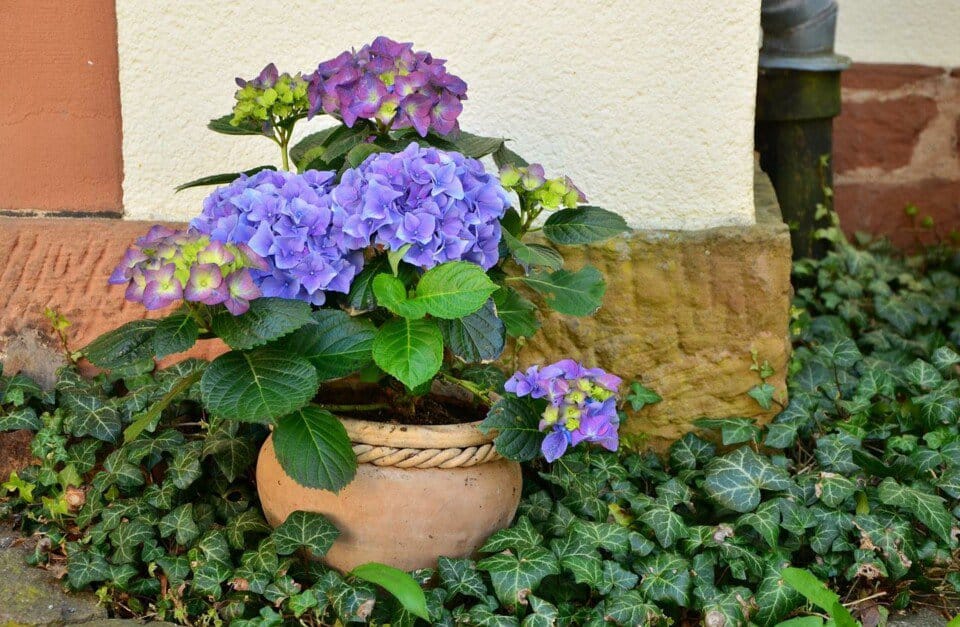Some links in the post are affiliate links and I get a commission from purchases made through some links found in the post.
hydrangeas are pretty plants that make a nice display in your living space so it becomes disappointing if this plant starts to turn brown during the summer.
Your hydrangea turning brown is not a rare occurrence and the bright side is that it can be fixed.
The major reason for hydrangeas turning brown is due to lack of moisture or constant exposure to intense sunlight.
Other reasons your hydrangea is turning brown is due to excess application of fertilizer, overwatering, fungal disease, and harm caused by exposure to frost.
Going further into this article, you will discover the solutions to this problem and how to help your hydrangeas recover. Some preventive tips have also been provided to help you avoid this problem next time.
Common Reasons your Hydrangea is Turning Brown
Naturally, hydrangeas wilt in autumn as they expect new growth during spring, but when this browning starts during spring or summer, you have to expect one of these factors to be the cause of this condition.
1) Lack of Moisture
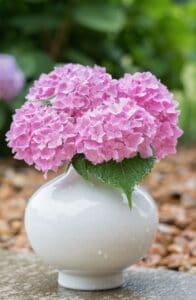 Hydrangeas require their soil to be constantly moist to stay hydrated.
Hydrangeas require their soil to be constantly moist to stay hydrated.
When your hydrangea is watered, the water travels up the stem to reach the leaves but in a condition where the moisture in the soil is inadequate, there isn’t enough pressure to transport this moisture to the leaves to keep it hydrated and this leads to the leaves browning.
When your hydrangeas lack sufficient moisture, you may notice some visible indications like a halt in growth, curling of leaves, and dried soil.
In some cases, the leaves may start to turn yellow before they start browning. You may need to change your watering routine during hot days as the moisture tends to dry off this plant easily at this time.
2) Exposure to Midday Sun
Common varieties of hydrangeas get sunburnt when exposed to the harsh intensity of the midday sun for a long time.
A common example is the Bigleaf (H. macrophylla) hydrangea which turns brown on constant exposure to full sunlight.
According to Kansas State University Research and Extension, most hydrangeas require full or partial shade to grow normally.
The panicle hydrangea (Hydrangea paniculata) native to Japan and China is one of the species of hydrangea that thrives on exposure to full sunlight.
If your hydrangea is browning as a result of exposure to extreme sunlight then you may notice some signs like
3) Small Pots
The little hydrangea you had months ago looked good in a small pot, but as this plant grows so does its root and these roots will need to grow in a wider space that is why a larger pot is necessary.
A small pot causes hydrangeas to be root bound, a situation where there is no space for the roots of this plant to grow so it grows in a spiral and upward pattern.
The roots of a root bound plant are always stressed, and growth in the root is responsible for the growth of the overall plant as well as the health of the plant.
With a stressed root, there will be no observable growth and your plant will start to wilt which will cause the leaves to turn brown.
4) Fertilizer Burn
Fertilizer burn is caused by the excess application of fertilizer to your hydrangea.
Already your soil mix contains nutrients and additional fertilizer will only cause the root of this plant to burn, and when the root is in this condition, the plant is affected.
Hydrangeas that suffer from fertilizer burn have leaves that look like they have been scorched which have a brown color.
Other visible signs of fertilizer burn sudden sprout which is quickly followed by yellowing of leaves and drooping of this plant.
The sudden growth observed at first stops because the roots are slowly dying and when the root is put in this condition, the growth of the plant is affected.
5) Shock
You may feel relief after transplanting your hydrangeas, but keep a close eye on them as they may not transition easily to their new environment.
When hydrangeas are used to grow in a specific climate condition and soil type, they may react differently when presented with a different environment and one of these reactions can be the browning of leaves.
One of the reasons hydrangeas experiences shock after transplant is because of damage to the root when uprooting the plant from its initial position.
It is recommended that you uproot this plant with a lot of root ball or with a lot of soil around the roots.
Apart from the discoloration, you may also notice that the leaves of hydrangea in shock start falling, if this problem is not treated on time, your plant may wither.
6) Fungal Damage
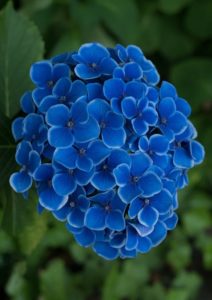
When your hydrangea is affected with leaf spot fungus then you will see brown spots forming on the leaves of this plant.
This is caused by fungal spores from the atmosphere clinging to a part of your hydrangea that is warm and wet, when this fungus gets attached to its new environment.
It reproduces by sporulation and this process causes brown spots to form on the leaves.
The brown spots caused by this fungus measure between 0.5 to 1.5 cm wide and other indications of this infection include your leaves dropping prematurely.
Since this infection affects the photosynthetic process of your hydrangea, you may observe stunted growth.
7) Root Rot
Root rot is caused by overwatering the soil of your hydrangea. Excess water in the soil of this plant can breed fungi that cause the root to rot, a common indication of this problem is a soft and black root system as opposed to the regular white and firm roots.
Overwatering may not cause root rot but having poor drainage for your hydrangea can cause water to saturate the roots of plants.
The leaves of your hydrangea turning brown is a sign of root rot, but to properly identify this problem you may notice other signs like stunted growth, small or pale leaves, and death of foliage and shoots.
8) Cold Weather
Spring is the season where new leaves of hydrangeas begin to bloom. When developing leaves are exposed to cold winds or cold in late spring, they begin to turn brown.
This is because new leaves and flower buds are more vulnerable to changes in environmental conditions than mature leaves.
Exposing new leaves to cold temperatures and winds can cause the moisture in them to dry up easily, when these leaves lack moisture, they start to turn brown.
How to Rescue a Hydrangea that is Turning Brown
If your hydrangea just started turning brown, the good news is that it can be saved, and here are some of the most effective ways to ensure that this happens.
1) Provide Moisture to Your Hydrangeas
After identifying that low moisture content is the reason for browning in your hydrangea, you need to help it recover by watering the soil with the right amount of water.
Since there is no specific amount of water suitable for hydrangeas, a good rule is to water this plant heavily twice a week and mist it daily. However, you may need to provide more moisture on hot days.
Also, ensure that the soil used to grow your hydrangea contains organic contents that can hold moisture for a long time.
Tips for watering: to check if your soil is dry, you can push your finger into it, and the best time to water your hydrangeas is in the morning or evening when the rate of evaporation is less.
Check out: how much water do hydrangeas need
2) Fix Sunburn
If your hydrangea is receiving a lot of sunlight from the midday sun, then you need to shade it. Most hydrangeas thrive under full or partial shade so this is a great way to control the amount of sunlight this plant receives.
Your hydrangeas should receive a lot of morning sun as it is not strong enough to cause sunburn but it supplies the light needed for the growth of this plant.
Learn more on how to prevent your hydrangea leaves from scorching.
3) Repot your Hydrangeas
If your hydrangea is grown in a small pot and you start to notice leaves turning brown, transfer it to a bigger space where the roots can grow broadly.
When repotting hydrangeas, use a pot that is at least 12 inches deeper and wider than your previous one.
When repotting this plant, your hydrangea may experience shock and the best way to aid transition is to uproot this plant with a lot of root ball or soil around it, this will help it grow better.
Transplanting it immediately also helps to ensure that it doesn’t adjust to growth outside of its usual environment quickly.
At the time of repotting or after transplant, moisture and low sunlight are vital for proper transition as your hydrangea may not have enough energy to function like it used to.
You can also remove the flowers to avoid too much energy consumption by this plant.
4) Treat Fungal Damage
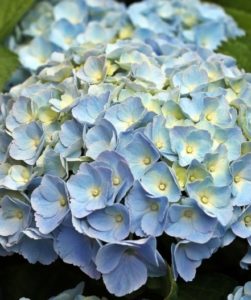
If you have noticed the small brown spots on your leaves, then you probably know that your hydrangeas are infected with leaf spot fungus.
To treat this problem, you can consider using an organic solution that contains copper octanate or sulfur to eliminate this fungus. You can also apply some homemade solutions like baking soda and water.
It is recommended that you isolate the infected plant or remove the infected leaves to prevent this infection from spreading to other parts of your plant.
5) Treat Root Rot
If you have detected the signs of root rot early, then you can still save your hydrangeas.
The first step to take is to uproot your plant and remove the infected root to prevent the fungi associated with root rot from spreading. Do not water this plant for some time by always keeping it moist.
If the drainage channels of your hydrangea are clogged or dysfunctional, then solving this problem will reduce the excess water in the soil and will help your hydrangea recover quickly.
6) Stop Over-Fertilizing
Root burn can be stopped by reducing the number of chemicals in the roots of your hydrangea.
This is best done by heavily watering your plant to wash the fertilizer away, but this water should be properly drained. Another heavy watering can be arranged days after the first.
7) Shelter your Hydrangeas
During winter or other cold seasons, there are a range of things you can do to ensure that your hydrangea is protected. Recovery from frost damage can only be done after the cold season and in spring.
You will need to prune out the brown leaves and apply the appropriate amount of fertilizer and moisture to support growth and healing.
It is important to know that damaged flower buds do not recover and will not produce flowers after frost damage.
How to Prevent your Hydrangeas from Turning Brown
It is better to take preventive measures against this problem than to deal with it. Here are some effective ways to prevent your hydrangeas from turning brown.
1) Provide Proper Care Conditions
Before growing hydrangeas, do some research on the factors that will facilitate and inhibit the growth of this plant.
Provide the right amount of moisture to this plant daily and water heavily when required, if it rains then there is no need to water your hydrangeas.
Allow this plant to get at least 6 hours of morning sunlight for proper growth and shade it in the afternoon to reduce the risks of sunburn.
You can shade it by putting an umbrella over it or building an open shade around it. A good fertilizer for hydrangeas contains NPK (nitrogen, phosphorus, and potassium) for proper growth, mild fertilizers are best for this plant.
Consider repotting this plant as it grows, a good way to go about this is to repot it after 2 to 3 years.
2) Purify your Soil
You never know when an attack from pests and diseases may arise so the best step to take is to apply an all-purpose pesticide or fungicide once in a while.
You should also know what conditions create a breeding ground for these foreign bodies, for the leaf spot fungus, an ideal breeding ground is soil with moisture and poor air circulation.
3) Shelter your Plants
Exposing your hydrangeas to cold temperatures can permanently damage the flowering buds of the plant so situate your hydrangea in a closed area or surround it with other plants in your garden.
Under these conditions, they are less likely to be affected by frost.
4) Mulching
Covering the topsoil of hydrangeas with mulch helps to conserve moisture and protect against direct sunlight.
Using organic mulch will add more nutrients to your soil so you don’t need the help of fertilizers.
Should I Cut off Brown Hydrangea Blooms in Spring?
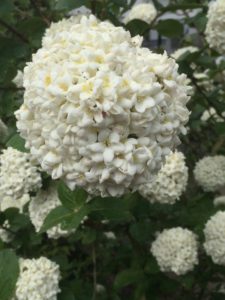 You can cut off the brown leaves of hydrangeas as they will eventually fall off on their own.
You can cut off the brown leaves of hydrangeas as they will eventually fall off on their own.
Some people may not like the way brown leaves make their hydrangeas look but you are allowed to cut off these brown parts as it allows for the early growth of new parts.
In a case where your hydrangea is infected with a disease caused by fungi or viruses, removing the brown parts of this plant will ensure that the infection is not spread to other parts of the plant.
Can Brown Hydrangea Leaves Recover
When hydrangea leaves turn brown, they can recover back to their normal state, but when the damage affects about 50% of the leaf, you should remove it as this action cannot be reversed.
You can help the whole plant recover by identifying the problem and fixing it. If you remove the affected leaves, they will also not grow back but new growth will be observed from the node close to the damaged area.
Final Thoughts
Browning of hydrangea leaves is a sign of this plant dying and this can be caused by various factors.
This article has covered all the possible causes of brown leaves in your plant as well as how to fix this problem and prevent it in the future. In summary, proper care should be given to this plant according to its requirements.

